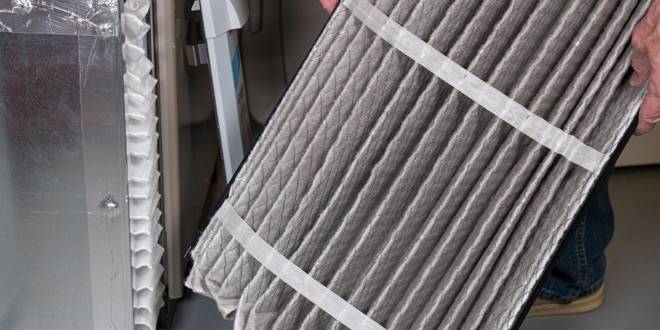
In Tulsa, OK, where the climate can vary widely, home and business owners are increasingly concerned about indoor air quality and sustainability. Reducing CO2 levels is crucial for health and environmental reasons. Discover the best filters to purify your indoor air effectively in this comprehensive guide.
Understanding CO2 Filtration
Carbon dioxide (CO2) is a colorless gas that is essential for life but in excess amounts can lead to poor indoor air quality and health issues. Traditional HVAC filters are designed to trap particles like dust, pollen, and pet dander, not gasses like CO2. Therefore, reducing CO2 levels requires specific solutions.
Types of Filters and Technologies
- Activated Carbon Filters
How They Work: Activated carbon filters absorb gasses, including CO2, through a process called adsorption. They have a large surface area, which makes them effective at trapping gas molecules.
Best For: Removing a variety of gasses, including CO2, from indoor environments. They are suitable for both residential and commercial settings.
- Biofiltration Systems
How They Work: Biofilters use living microorganisms to capture and biologically degrade pollutants, including CO2. These systems often use soil, compost, or other organic materials as the filter medium.
Best For: Larger commercial spaces or industrial applications where there’s a need for significant CO2 reduction.
- Plants as Natural CO2 Filters
How They Work: Indoor plants can absorb CO2 and release oxygen through photosynthesis. While not as effective as mechanical filters, they can complement other air purification methods.
Best For: Small-scale CO2 reduction in homes and offices. They also enhance the aesthetic appeal and can improve overall air quality by removing other pollutants.
Choosing the Right Solution
Selecting the best method for reducing indoor carbon dioxide concentrations depends on several factors, including the size of the space, the existing HVAC system, and specific air quality needs. For homes and small businesses, a combination of activated carbon filters and indoor plants might be the most practical solution. Larger commercial spaces might benefit from more advanced solutions like biofiltration systems.

Maintenance and Considerations for CO2 Reduction Systems
Ensuring the effectiveness of CO2 reduction systems in your home or business requires understanding their maintenance needs and considering the costs involved. Here’s a deeper look into what you should keep in mind:
Regular Maintenance is Key
Frequency of Maintenance: The type of CO2 reduction system you choose will dictate the maintenance frequency. Activated carbon filters, for example, need to be replaced or regenerated periodically to maintain their effectiveness. The lifespan of these filters can vary based on the manufacturer’s specifications and the indoor air quality in your space.
Maintenance Activities: For biofiltration systems, maintenance might include monitoring the health of the microorganisms and replacing the biofilter medium as needed. Ensuring that the system is not overloaded and operates within its capacity is crucial for its efficiency and longevity.
Understanding Costs
Initial Installation Costs: The upfront cost of installing a CO2 reduction system can vary widely. Simple solutions like activated carbon filters are relatively inexpensive and easy to integrate with existing HVAC systems. More complex systems, such as biofiltration units, require a larger initial investment and potentially more extensive modifications to your current setup.
Ongoing Maintenance Costs: Regular maintenance is essential for keeping your system effective at reducing CO2 levels. This might include the cost of replacement filters, professional servicing fees, and, for more sophisticated systems, energy costs associated with their operation. Budgeting for these expenses will help ensure that your system continues to function optimally over time.
Professional Consultation
Integration with Existing Systems: An HVAC professional can provide invaluable advice on integrating a new CO2 reduction system with your existing HVAC setup. They can assess your current system’s capacity, suggest compatible solutions, and ensure that any new additions do not negatively impact the overall efficiency and performance of your HVAC system.
Custom Solutions: Every space has unique needs based on its size, layout, and the activities performed within it. HVAC experts can help tailor a CO2 reduction solution that meets your specific requirements, ensuring that you invest in a system that offers the best value and performance for your situation.
Choosing and maintaining a CO2 reduction system involves careful consideration of your needs, the available options, and the associated costs. Regular maintenance is crucial for ensuring that your system can remove carbon dioxide efficiently for longer periods. By consulting with HVAC professionals like ours at Cartwright, you can make informed decisions that enhance your indoor air quality and contribute to a healthier, more sustainable environment.
Understanding the Risks of CO2 Poisoning, Detection, and Response
Carbon dioxide (CO2) is a naturally occurring gas that is harmless in small quantities but can become hazardous at high levels. CO2 poisoning, though less common than carbon monoxide (CO) poisoning, poses significant health risks, especially in poorly ventilated indoor spaces. Here’s what you need to know about the risks, how to detect CO2 buildup, and what actions to take if you suspect CO2 poisoning.
The Risks of CO2 Poisoning
Mild to Moderate Exposure: Initial symptoms of CO2 exposure can include headaches, dizziness, restlessness, tingling or pins and needles, difficulty breathing, and increased heart rate. These symptoms often mimic those of other conditions, making early detection challenging.
Severe Exposure: High levels of CO2 can lead to confusion, convulsions, unconsciousness, and in extreme cases, death. The risk is particularly high in environments where CO2 can accumulate, such as basements, greenhouses, or industrial settings.
How to Detect CO2 Buildup
CO2 Monitors: The most reliable way to detect CO2 levels is by using a CO2 monitor. These devices measure the concentration of CO2 in the air and alert you when levels exceed safe thresholds. It’s advisable to install CO2 monitors in areas where the risk of accumulation is higher.
Ventilation and Air Quality Checks: Regularly checking and maintaining ventilation systems can help prevent CO2 buildup. Be aware of signs of poor ventilation, such as stale air, persistent odors, or condensation on windows, which can indicate high CO2 levels.
What to Do in Case of CO2 Poisoning
Increase Ventilation Immediately: If you suspect CO2 buildup, open windows and doors to allow fresh air to circulate and dilute the concentration of CO2. Turn on fans to help expedite the process.
Evacuate the Area: Move to an area with fresh air immediately. It’s crucial to reduce exposure to high CO2 levels as quickly as possible to mitigate health risks.
Seek Medical Attention: If anyone exhibits symptoms of CO2 poisoning, seek medical attention promptly. Even if symptoms seem mild, it’s important to get evaluated, as the effects of CO2 exposure can worsen over time.
Identify and Address the Source: Once everyone is safe, work on identifying the source of CO2 buildup. This may involve inspecting HVAC systems, appliances, and practices that could lead to CO2 accumulation. Consulting with HVAC professionals can help identify and rectify the issue.
Preventive Measures
Taking proactive steps to ensure proper ventilation and air quality in your home or workplace is key to preventing CO2 poisoning. Regular maintenance of HVAC systems, using CO2 monitors, and being aware of the signs of poor air quality can help create a safer environment for everyone.
Understanding the risks associated with CO2, knowing how to detect its presence, and taking swift action in case of exposure are essential for maintaining a healthy indoor environment. Always prioritize safety and health by being prepared and informed.
Improving indoor air quality by reducing CO2 levels is essential for the health and comfort of occupants in Tulsa, OK. While no single solution fits all, a combination of technologies and natural methods can significantly improve air quality. Activated carbon filters, biofiltration systems, and the strategic use of indoor plants offer viable paths toward cleaner air.
Breathe Easier with Cartwright Heat & Air
Elevate your indoor air quality today! At Cartwright Heat & Air, we specialize in providing top-tier HVAC solutions that cater to your specific needs. Whether it’s installing advanced filters for reducing CO2 or optimizing your entire HVAC system for better air quality, we’re here to help. We also offer heating and cooling installation, repair, and maintenance. Experience the difference with our expert services and ensure a healthier, more sustainable environment for your home or business. Reach out now and take the first step towards cleaner air!








